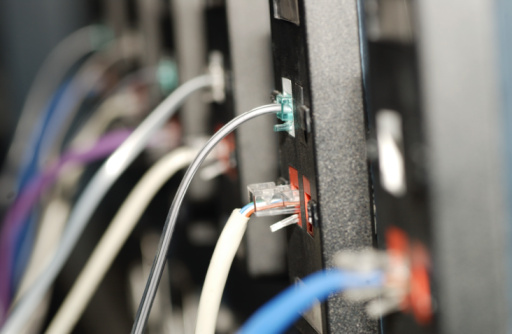
Regulation is not the answer to interconnection concerns.
The Internet took its modern form in the mid-1980s as a “network of networks,” an agglomeration of interconnected networks. Customers wishing to connect to, say, Yahoo, may pass through a half-dozen or more networks to reach their destination, all seamlessly. Network interconnection, so essential to making the Internet work, had a technical component (how the connections actually worked) and a business component (the business terms among networks). These interconnection agreements were all private, often sealed with just a handshake. In some cases, when the “to” traffic and “from” traffic between two networks were roughly in balance, the networks typically “peered,” meaning they exchanged traffic without payment. When the traffic was imbalanced, the sending network had a “transit” agreement, meaning it paid the receiving network. Of course, the Internet was absolutely dependent upon successful negotiations of interconnection agreements, and for the past thirty years it has operated extremely well.
Recently, however, some networks have complained to the Federal Communications Commission (FCC) that some Internet service providers (ISPs) demand payment to interchange movie traffic with them, claiming that this violates “network neutrality,” an FCC order currently under revision. In response, the FCC quickly noted that interconnection is not covered by network neutrality and then dismissed the complaints. But others have complained further, and the FCC may eventually need to take action to regulate Internet interconnection arrangements.
Are these kinds of negotiated relationships over interconnection unique to the Internet? Is this some Internet magic unknown to the rest of the economy? Hardly. All businesses that produce goods that sell through retailers have the same problem. For example, Swanson produces soups, which it sells through supermarkets. To do so, they negotiate with supermarkets for shelf space, and Swanson generally stocks these leased shelves themselves. The price Swanson pays for shelf space is negotiated with the supermarkets: the more shelf space, the more they pay. The system works amazingly well; I always find Swanson soups on the shelves at my favorite supermarket. It’s in everyone’s interest to reach agreement to stock shelves, as well as it is to ensure your favorite content is available on your ISP.
When Swanson (or Netflix) wants to connect with me, it goes through my supermarket (or Comcast) via shelf space (or bandwidth) for which it pays. More volume, more pay. This is a private business deal for supermarket-Swanson (or content providers/networks-ISPs), and for decades, as long as we have had the supermarket (or Internet), we have had nary a complaint. We have had no civil, breach of contract, or antitrust suits. Zero. And the grocery business (and the Internet) work…amazingly well. And yet we now hear proposals to regulate interconnection on the Internet (although surprisingly, no proposal to regulate the food distribution industry, although it is obviously has a far more important social function). To quote a friend from a food company, things have worked “without a hitch,” so “what can a regulator possibly add?”
Those of us familiar with the history of telecommunications can speak to what a regulator can add – and it is not pretty. Interconnection in the telephone business has been a total mess. During the Bell System monopoly era, things were straightforward. But after we began to open up the market to competitive local exchange carriers (CLECs) in the late 1990s, all hell broke loose.
The CLECs positioned themselves in front of dial-up ISPs, even paying them for the privilege and collecting exorbitant per-minute terminating fees, while incumbent local exchange carriers (ILECs) could not impose a higher tariff in response, having to spread the exorbitant costs across all its customers. By 2004, the FCC had “fixed” this problem that it had previously created, but let’s be clear: this problem was the result of FCC regulation in a partially deregulated world. Of course, the presence of the FCC ensured that both ILECs and CLECs had someone to complain to, someone who was committed to intervene and regulate. And therein lies the rub. The ultimate cause of interconnection problems in telecommunication was the existence of regulation in a partially competitive world.
For 30 years now, we have had private interconnection contracts among Internet carriers in a competitive market. We have had no complaints whatsoever, because there was no one to complain to. By contrast, in the partially regulated telephone market, we had during the same period no end of complaints and no end of regulatory interference to try to get the market right, because there was someone to complain to. During the CLEC era, the FCC posted a sign on its door: “Open For Business.”
The long, depressing history of regulation has taught us two very important empirical principles that we need to keep firmly in mind at this critical juncture of the Internet:
- When regulators indicate a willingness to intervene in a market (“Open For Business”), all market participants will turn their attention from satisfying customers to special pleadings to get regulations that favor them and disfavor their competitors. Innovation takes second place to rent-seeking behavior by market participants as they jockey for regulatory advantage.
- Regulators who may wish to limit what they regulate face constant pressure from market participants to expand their regulatory purview to help this or that participant. While the regulators may initially resist this pressure, inexorably regulation will extend to reach the entire industry.
Surely no one would think of doing this to our beloved Internet, would they? Well, yes. In fact, they are already doing it.
After decades of taking a hands-off approach to the Internet, the FCC has now decided to regulate it in the form of the Open Internet Order. Although not yet finalized, there is little doubt that some form of net neutrality will soon be imposed on ISPs. In doing so initially, in 2010, the FCC put up the “Open For Business” sign, and, as expected, the rent-seeking started almost immediately. Level 3 objected to Comcast giving them the paid peering treatment when they started carrying Netflix traffic, a change in traffic balance that, according to common Internet practice, called for payment. Level 3, however, called it a violation of net neutrality and requested the FCC to step in to resolve the dispute. Then-Chairman Julius Genachowski pooh-poohed the complaint as having nothing to do with net neutrality, but rather interconnection, and further said he wouldn’t deal with net neutrality issues. But he really doesn’t have a choice; in a recent letter to the FCC, Tim Wu stated it very clearly: “the Commission now believes that the statutory aims of the Telecommunications Act are more easily met through regulated access rules rather than deregulated access.”
After 30 years of private contracting without complaint, the presence of the regulator has started to elicit rent-seeking complaints aimed at extending regulation further into the Internet. It didn’t take long for the two fundamental principles of regulation to show up, did it?
This is not a new observation on my part. Dennis W. Carlton and Randal C. Picker stated the principle most clearly: “Competition is diverted from the marketplace to the regulator’s office, and the tools for success – ranging from subtle influence to out-and-out bribery – may be very different. Instead, we should regulate only when we must – natural monopoly being the core case – and leave general antitrust doctrine and the court system to handle the rest.”
We again seem to be ignoring the wisdom that history teaches us about how regulation evolves, somehow believing that well-intentioned people can regulate lightly, with no unintended consequences and no politics. (I consider the phrase “light regulation” to be much like the phrase “jumbo shrimp.”) But all we need, some advocates say, is simple dispute resolution to solve problems where negotiations between private parties break down.
Well, this depends upon, first, whether negotiations actually break down in settling interconnection terms any more than they do in any other business, say supermarket shelf space. Yet the likelihood you will be unable to connect to the content you desire because of an interconnection negotiation breakdown is vanishingly small (according to Hal Singer’s research).
Second, it depends on the FCC being a more expert, more expeditious dispute resolver than, say, a general court. Hard to see any hope for this. As J. Pierre De Vries and Phil Weiser have said, “the FCC has not developed the capacity to conduct the sort of adjudication handled by courts or even by many administrative agencies.”
OK, so where does this leave us? We have an interconnection regime based on private contracting in a competitive market that has worked amazingly well for 30 years, with no obvious market failure. There is no evidence that the very few minor and short-term negotiations failures are any more serious than in other industries (such as supermarkets). And yet we call for regulation in this market? From a regulator whose ability to adjudicate disputes has been shown to be nil?
Regulation has proven over the years to be a source of inefficiency, suppression of investment, and suppression of innovation. Yet many of the same people who have celebrated the dynamism of an unregulated Internet now think it best to turn the Internet into the old Bell System, with Title II regulation and all. Have we lost our minds?




